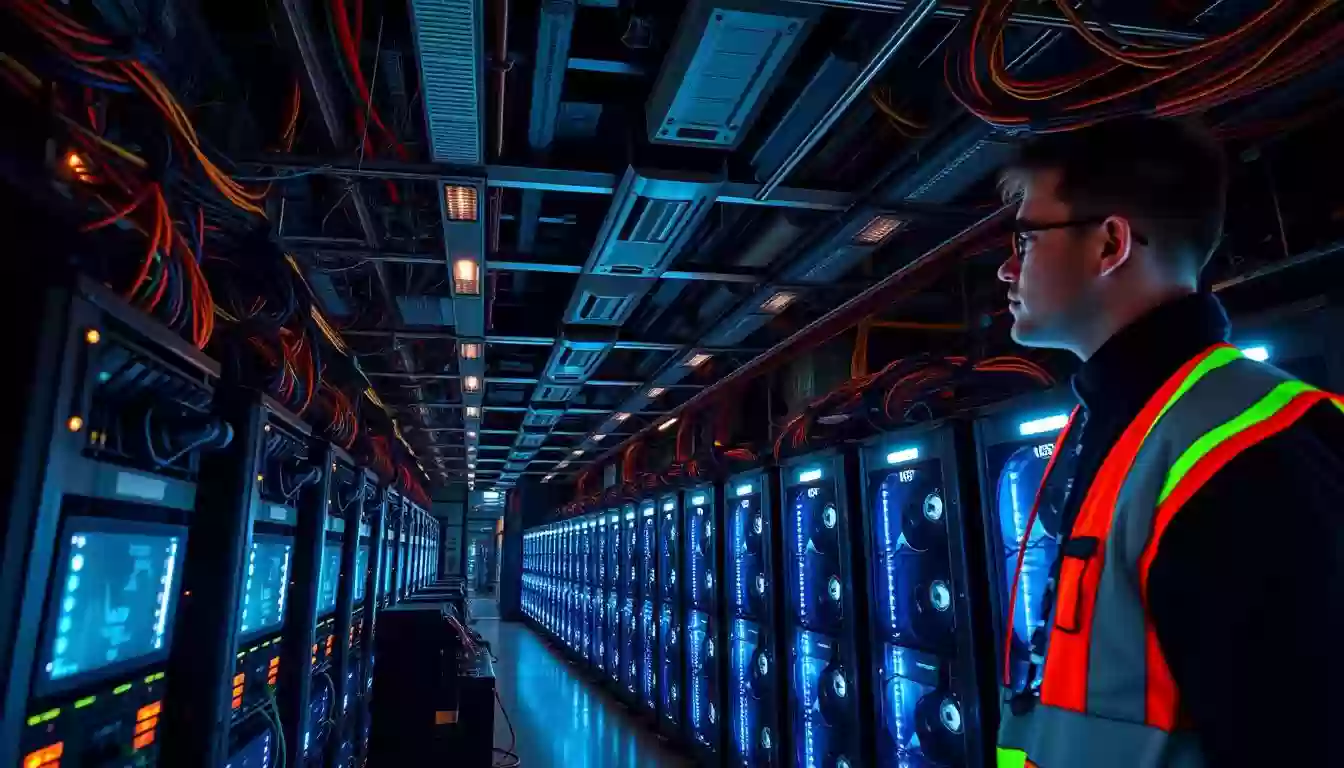Solo Mining vs. Pool Mining: Which One Should You Choose?
 21 Feb 25
21 Feb 25
In the world of Bitcoin mining, a key question is how to mine Bitcoins most efficiently. With mining rewards at 6.25 BTC per block, miners aim to increase their earnings. Choosing between solo mining and pool mining is vital for mining success and profit.
Bitcoin mining pools are popular for their steady income. Yet, solo mining offers higher rewards and more control. We'll look at the good and bad sides of each method. This will help us decide which is best for us, improving our mining success and earnings.
Introduction to Bitcoin Mining
Bitcoin mining is a complex process that keeps all cryptocurrencies safe. It uses computers to solve hard puzzles. This secures the network and checks transactions.
Miners play a key role in creating new digital assets. They also help with transactions. This is vital in the world of cryptocurrency.
The mining process needs a lot of computer power. ASIC miners are the most efficient. They cost between $2,000 and $15,000, which is a big investment.
To mine successfully, many join a mining pool. This way, they share their power and rewards.
Choosing the right mining strategy is important. You need to think about electricity costs, hardware efficiency, and the cryptocurrency's market price. By picking the right mining pool, miners can boost their success and rewards.
https://www.youtube.com/watch?v=-PWBzS9Zh5o
In the next section, we'll look into mining pools more. We'll talk about their benefits and drawbacks. We'll also cover the different types of mining pools and how to pick the best one.
Understanding Mining Pools
Mining pools are key in the world of cryptocurrencies. They let miners team up to mine blocks more efficiently. This way, they can make a steady income. It's a better option than solo mining, which can be very hard and often doesn't pay off.
Definition of Bitcoin Mining Pools
A Bitcoin mining pool is a group of miners working together. They solve puzzles to add new blocks to the blockchain. This teamwork makes mining easier for more people to join in.
Popular Bitcoin Mining Pools
F2Pool and AntPool are among the top mining pools. They're known for being reliable and fair. Joining these pools can help miners get a steady income and work more efficiently.
Benefits of Joining a Mining Pool
Joining a mining pool has many advantages. Miners get a steady income and work more efficiently. It also lets small miners join in, as they can pool their resources. Choosing the right pool can help miners get the most out of their work.

| Mining Pool | Payout System | Fees |
|---|---|---|
| F2Pool | Pay-Per-Share (PPS) | 2.5% |
| AntPool | Proportional (PROP) | 1.5% |
Solo Mining Explained
Solo mining means one miner works alone to validate Bitcoin transactions and add new blocks to the blockchain. This method is good for those who want to maximize their mining profitability and control their mining. But, it also has its challenges and risks, like the solo mining pros and cons to think about.
Solo mining needs a lot of computational power to solve complex puzzles. Miners use special hardware, like ASIC miners, to find a hash with leading zeroes. The reward for mining a block is 3.125 BTC, but it goes down with each halving event.
To succeed in solo mining, understanding the solo mining pros and cons is key. Using efficient hardware, cutting energy costs, and keeping up with mining news helps. This way, solo miners can find blocks and earn rewards, making it a rewarding venture for those ready to face challenges.
Pros of Solo Mining
Solo mining has many benefits, like the chance for bigger rewards and full control over mining. When a solo miner finds a block, they get the whole reward. This is different from Bitcoin mining pools, where rewards are split among everyone.
Another plus is the ability to pick which transactions to include in a block. This can lead to earning more in transaction fees. It also helps decentralize mining, as each miner makes their own decisions without needing a big pool.
https://www.youtube.com/watch?v=nhWJq_IfX8s&pp=ygUNI2FzdHJvbm9tcG9vbA%3D%3D
Solo mining also makes the network more resilient and less open to censorship. Power is spread out among individual miners, not just big Bitcoin mining pools. But, it's important to weigh the solo mining pros and cons. Solo mining can mean earnings can vary a lot and you might not have as much hash power.
Cons of Solo Mining
Solo mining is tough and unpredictable, with several downsides. One big issue is the variable income. It's like playing the lottery with a supercomputer, trying different combinations to win. Miners often go long without rewards, making steady income hard to predict.
Another big problem is the need for lots of technical power. Miners must invest in strong computers to keep up with others. The mining efficiency depends on the hardware, electricity costs, and competition. To do well, miners must optimize these factors.
Here is a comparison of some popular mining hardware:
| Hardware | Hashrate | Power Consumption | Efficiency |
|---|---|---|---|
| Bitmain Antminer S21 Pro | 234 TH/s | 3,510W | 15 J/TH |
| MicroBT Whatsminer M66S | 298 TH/s | 5,513W | 18 J/TH |
| Canaan Avalon A1566 | 150 TH/s | 3,225W | 21.5 J/TH |

Advantages of Pool Mining
Pool mining has many benefits, like a steady income. Miners pool their power to solve blocks and get rewards. This method is safer than solo mining, where rewards can be far apart.
Pool mining means consistent payouts. Unlike solo mining, where rewards are hit-or-miss, pool mining shares rewards fairly. This makes it easier to budget for mining. Plus, the combined power of many miners boosts the chance of solving a block.

Top mining pools like F2Pool, BTC.com, and AntPool offer these benefits. They charge a fee, but it's worth it for the stability. Joining a pool reduces solo mining risks and boosts payout chances.
| Pool Name | Fees | Payout Frequency |
|---|---|---|
| F2Pool | 4.80% | Daily |
| BTC.com | 4.27% | Weekly |
| AntPool | Not specified | Monthly |
In summary, pool mining is a reliable way to earn. It combines power for better block-solving chances and rewards. Top mining pools make it easy to join, making it a favorite among miners.
Disadvantages of Pool Mining
Pool mining has its downsides when it comes to mining efficiency. One big issue is the fees and how rewards are shared. Mining pools take a cut of what miners earn, usually between 1-3%. This can really cut into maximizing mining profitability, as miners have to give up part of their earnings.
Another problem with pool mining is the loss of control. Miners have to follow the pool's choices on which transactions to include in a block. This can impact mining efficiency. For miners who want more control over their work, this can be a big drawback.

In summary, pool mining has its good points but also its bad. Miners should think carefully about these points before deciding to join a pool or mine solo. This way, they can better maximizing mining profitability and improve their mining efficiency.
Comparing Mining Efficiency
Several factors affect mining efficiency. These include the mining hardware, software, and pool. To find the best mining strategies, it's key to consider these elements together.
A strong GPU setup can boost mining efficiency a lot. This is true when paired with a trustworthy mining pool. Also, using top-notch mining software can enhance the hardware's performance.
Overall, mining efficiency is vital for mining success. Knowing what impacts efficiency and using the best mining strategies helps miners earn more. It also keeps them competitive in the mining market.
Conclusion: Making the Right Choice
As Bitcoin mining moves forward, miners need to think about their resources and goals. Solo mining can lead to big rewards but needs a lot of technical skill and power. Mining pools, on the other hand, offer steady income and easier entry, with tools and resources available.
The choice between solo mining and joining a pool depends on the miner's comfort with risk, financial goals, and technical skills. By looking at mining efficiency, profit, and how they fit into the network, miners can choose wisely. The best miners will be those who keep up with the fast-changing world of cryptocurrency mining.
FAQ
What is Bitcoin mining?
Bitcoin mining is the process of creating new digital assets and conducting transactions. Miners use computational power to solve complex puzzles. This secures the Bitcoin network.
How does Bitcoin mining work?
Bitcoin mining uses computational power to solve complex puzzles. Miners who solve these puzzles earn new Bitcoin tokens. They also help keep the blockchain secure.
What are Bitcoin mining pools?
Bitcoin mining pools are groups of miners working together. They share their resources to find blocks and earn rewards. F2Pool and AntPool are well-known pools.
What is solo mining?
Solo mining is when a single miner tries to solve puzzles alone. They aim to earn rewards without joining a pool.
What are the pros of solo mining?
Solo mining offers the chance for higher rewards for successful blocks. It also gives miners full control over their operations.
What are the cons of solo mining?
Solo mining's downsides include unpredictable income and the need for significant computational power. This makes it challenging for solo miners.
What are the advantages of pool mining?
Pool mining provides a stable income and lower entry barriers. Miners can contribute resources without needing much computational power.
What are the disadvantages of pool mining?
Pool mining's drawbacks include fees and revenue sharing. Miners also have less control over mining decisions, as the pool operator decides.
How do solo mining and pool mining compare in terms of mining efficiency?
Pool mining is often more efficient due to shared resources. This leads to a more steady income. Yet, network difficulty and computational power also affect efficiency.





















